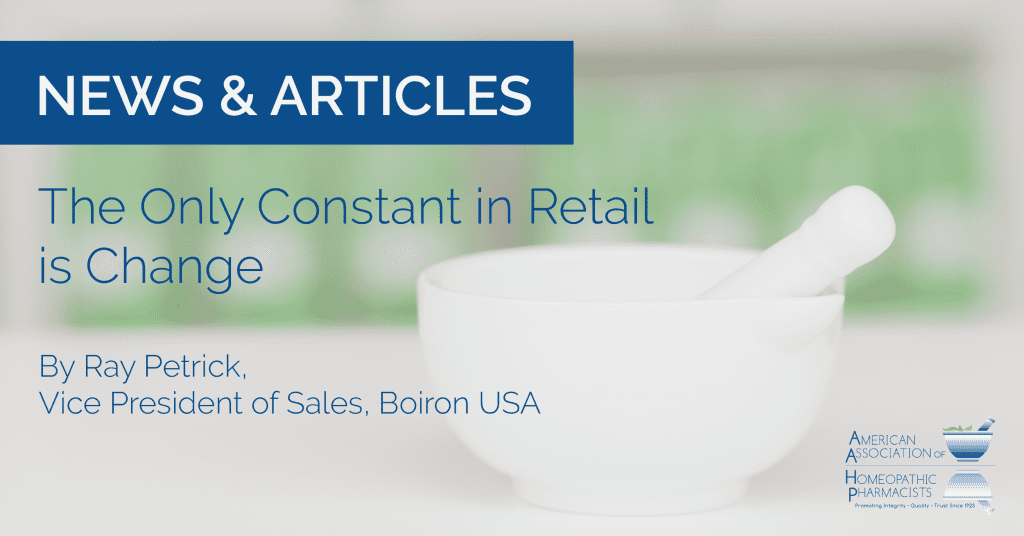The Only Constant in Retail is Change

By Ray Petrick, Vice President of Sales, Boiron USA
The retail landscape is changing—and dramatically. During the past 10 years, retail disruption has become the norm. The evolution of consumers integrating wellness products into their lifestyle has moved from an emerging trend to the standard. Words like “natural,” “holistic” and “organic” are now in consumers’ everyday vocabulary, causing the retail landscape to sustain and embrace these innovations.
A major retail transformation has been the advent of ecommerce. The effect of the Amazon phenomena reaches far into the vernacular of the millennials and Gen Xers who now say, “Just Prime It.” Most millennials (67%) and those in Generation X (57%) prefer online shopping, and Amazon has certainly leveraged this. With their different business platforms, “Subscribe & Save,” and of course now their private label offerings, the ecommerce behemoth is maintaining competitive pricing pressure (or disrupting) in the CPG and Wellness spaces.
Yet another market adjustment is the arrival of cannabidiol or CBD products at retail. The rapid growth triggered by hemp no longer considered a controlled substance or under the jurisdiction of the Drug Enforcement Authority (DEA) will cause yet more disorder in the OTC category as well as our wellness industry.
At January’s ECRM Health Conference in Chicago, the buzz was all about CBD. Top companies in the CBD area had an opportunity to present their different forms of CBD to the largest Food, Drug and Mass retailers. Most of these retailers are trying to navigate the complex and changing situation to bring CBD to market. Many are cautiously waiting for the FDA to clarify murky regulations.
AAHP’s guest speaker at the March 8 Membership Meeting also spoke about these challenges. “Scientifically, a great deal is not yet understood about cannabis,” said Susan J. Hewlings PhD, RD. As co-founder of Substantiation Sciences LLC , she provides science and nutrition consulting services and medical writing for the dietary supplement, cannabis and medical industries. “There are questions about characterization, standardization, dose/frequency, and efficacy.”
The added caveat is the potential significant business opportunity that CBD presents. According to SPINS, which reports on sales within the natural, organic and specialty products industry, CBD sales in 2015 amounted to $500k. Three years later, 2018 ended with $48 million in CBD sales from the natural and conventional retail outlets, again as reported by SPINS. In comparison to when the natural, organic and Amazon trends emerged, no one was sure of the future. But in the case of CBD, some are forecasting that CBD sales could reach $22 billion in retail sales across all categories in food, drug and wellness by 2022. Major manufacturers and retailers will continue to be cautious but are moving forward to develop CBD strategies for their respective brands and categories.
Similar to the appearance of other market disruptors, no one wants to be the one who misses out on this opportunity. I think it’s safe to say the CBD disruption is here to stay and will be hitting major retailer shelves soon.
